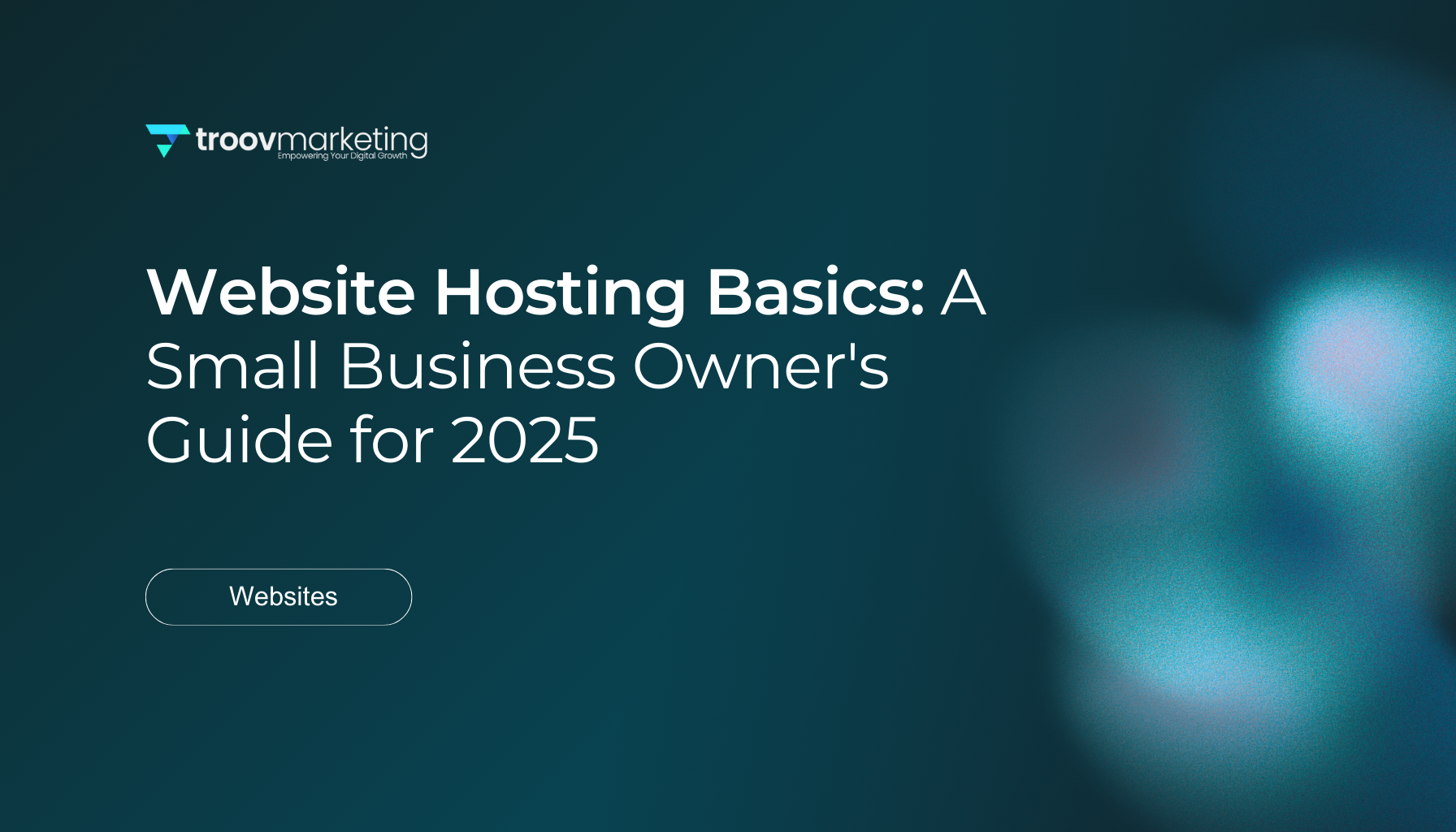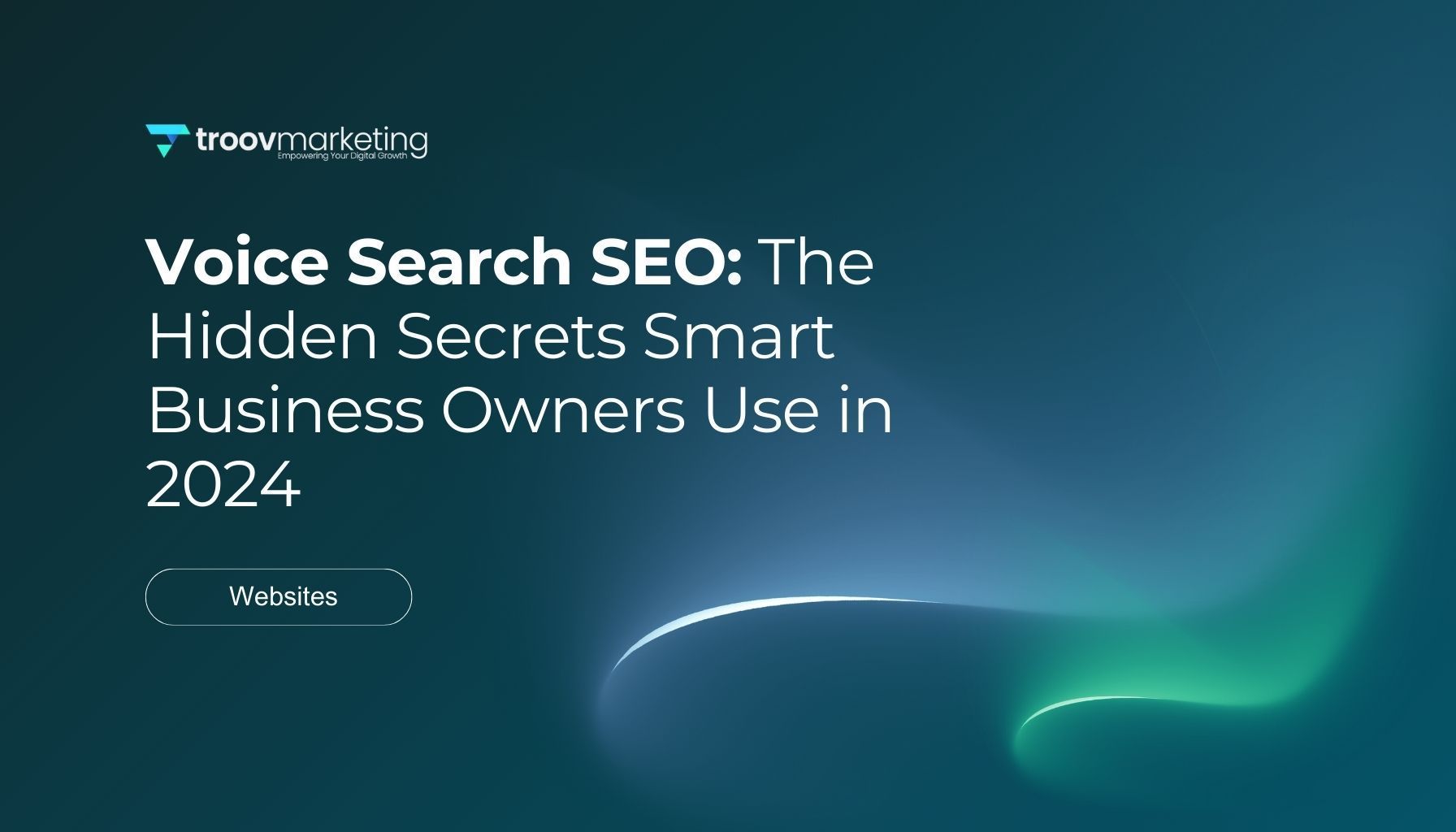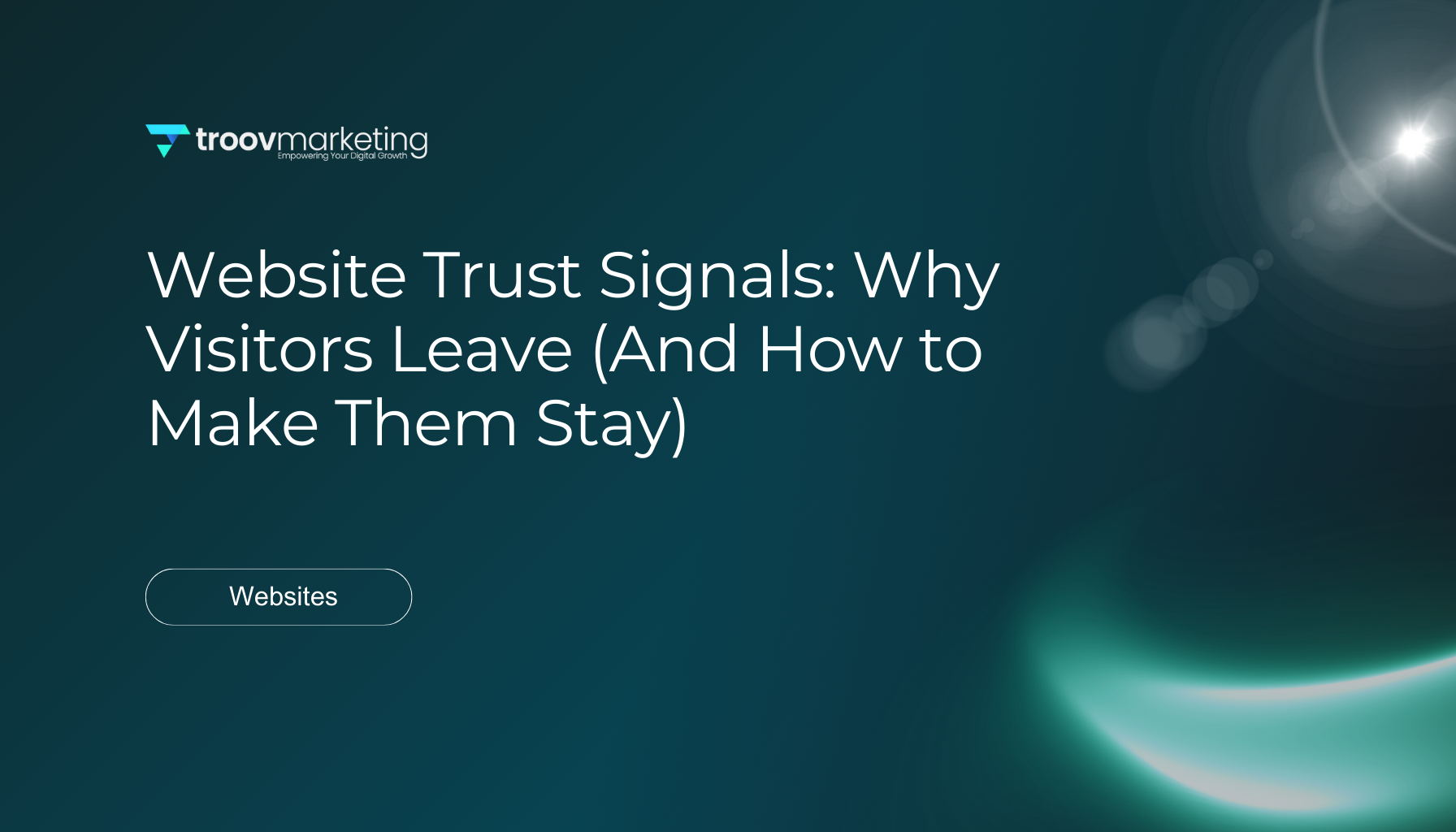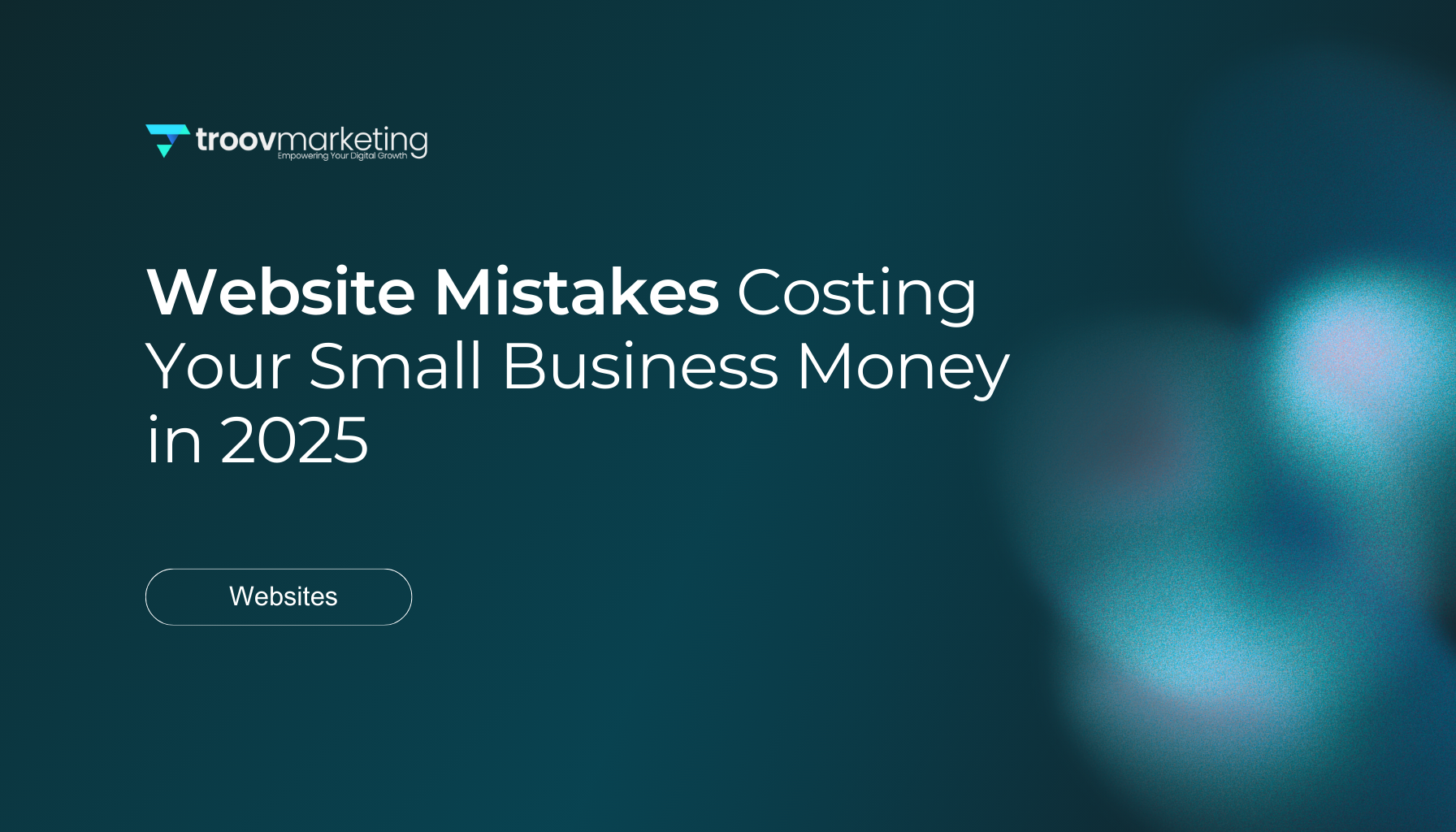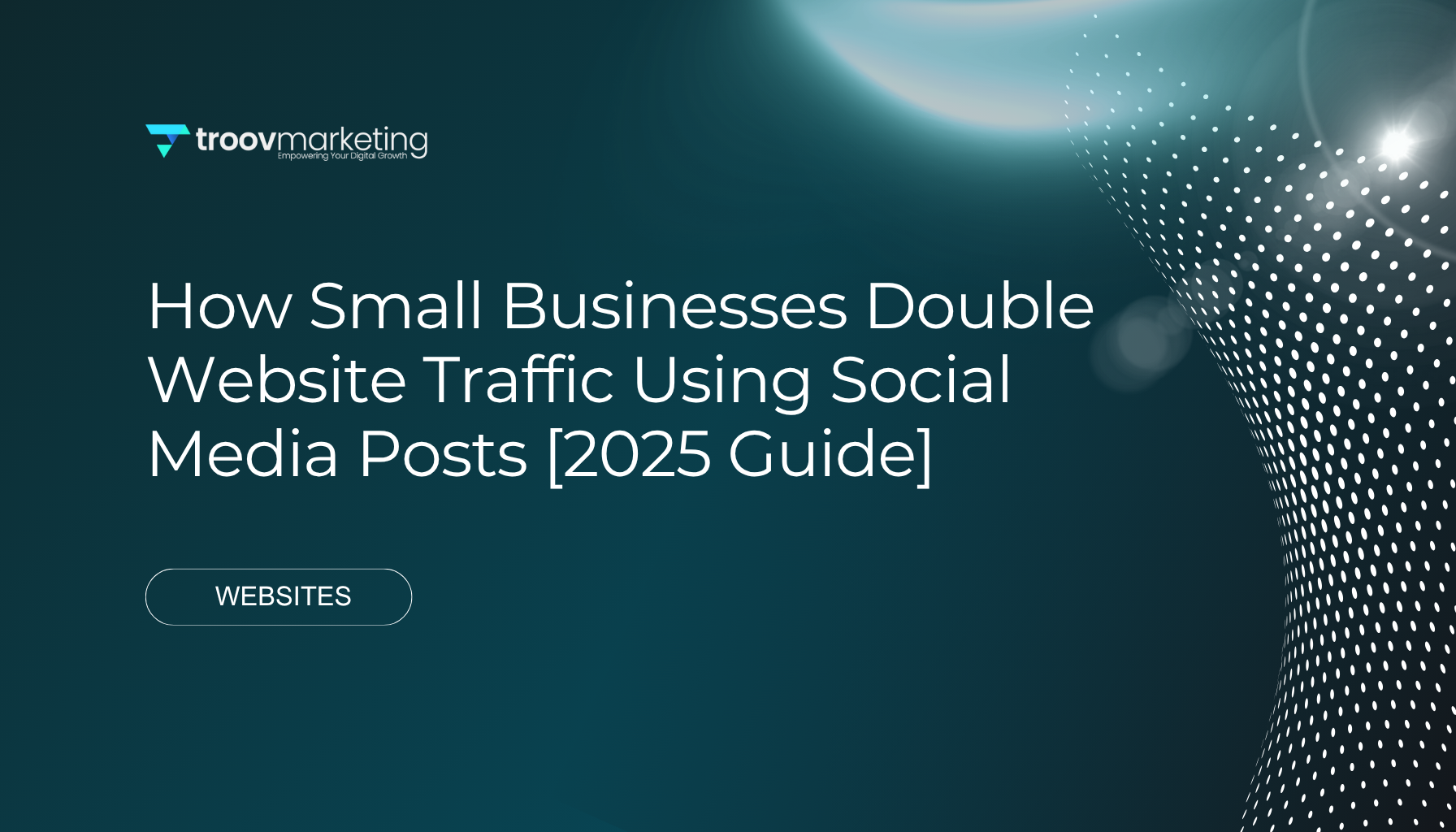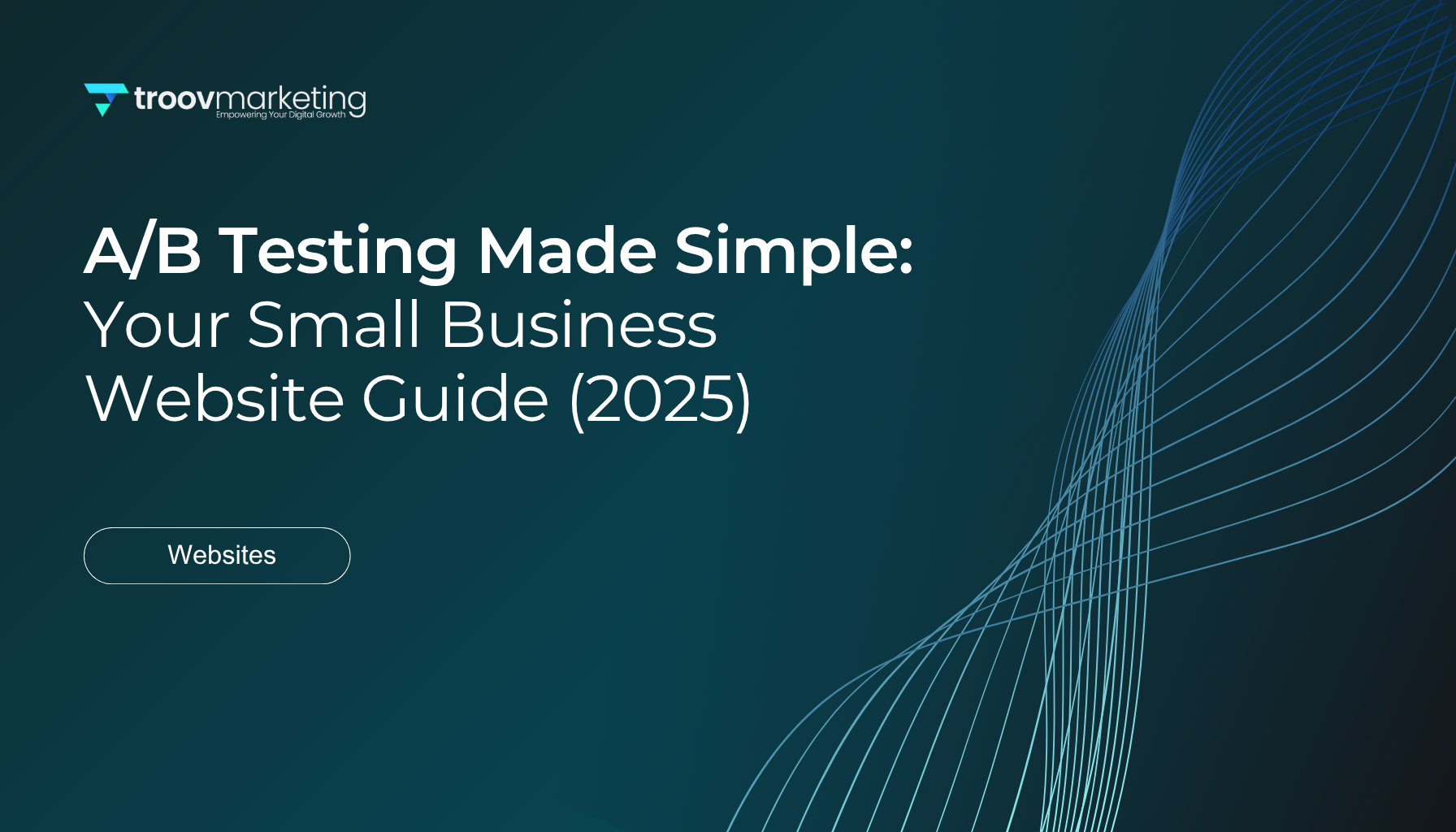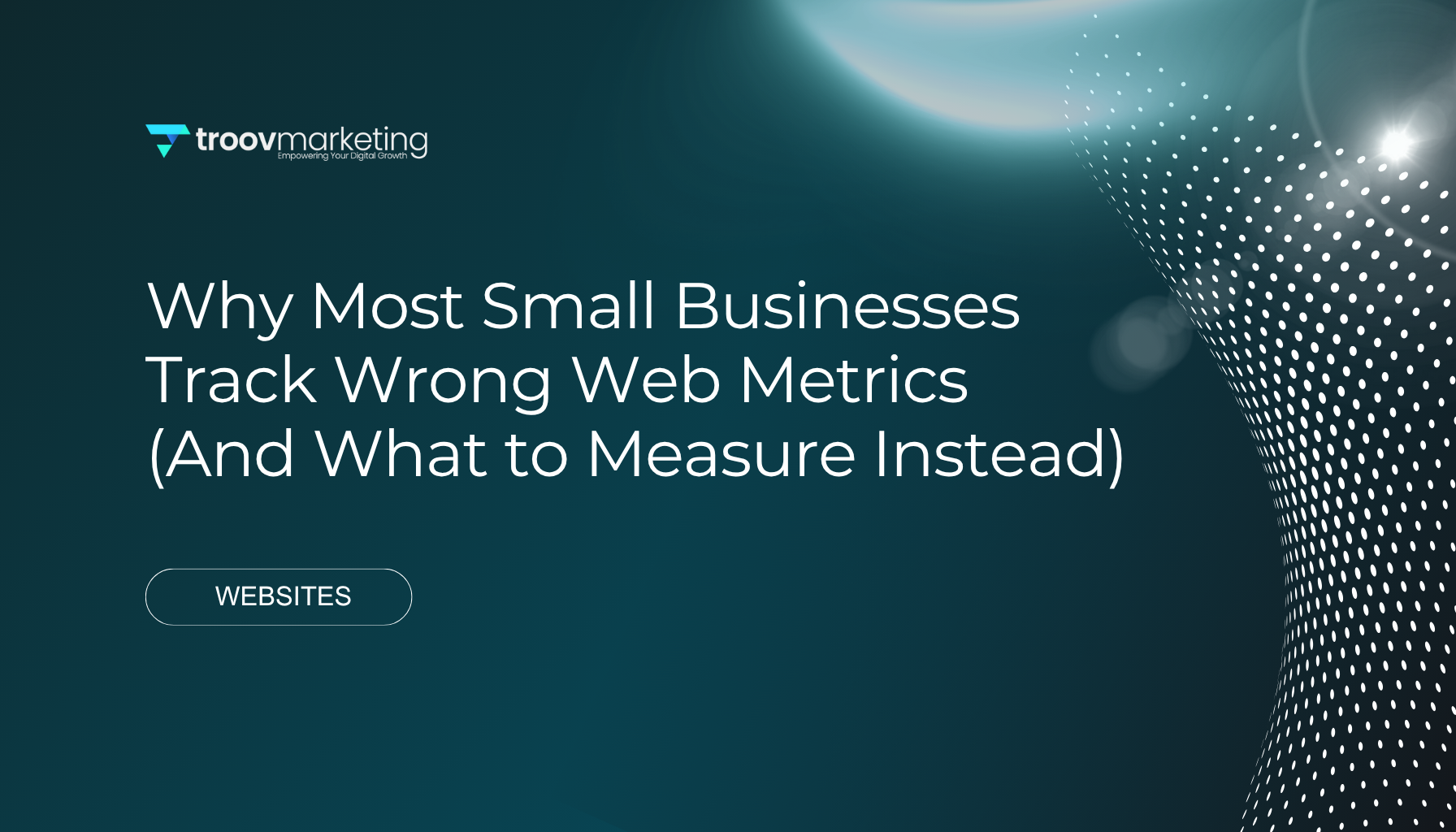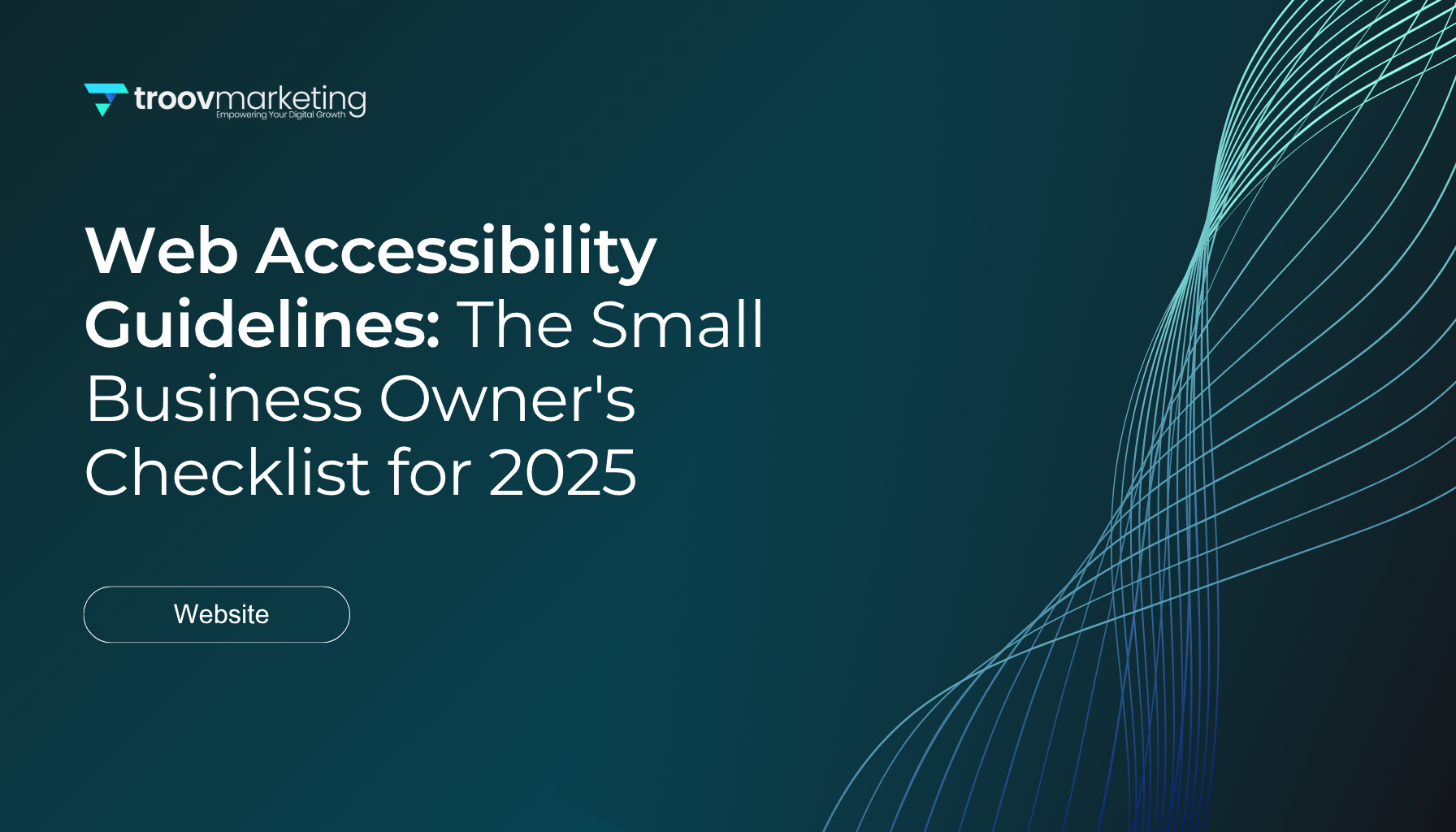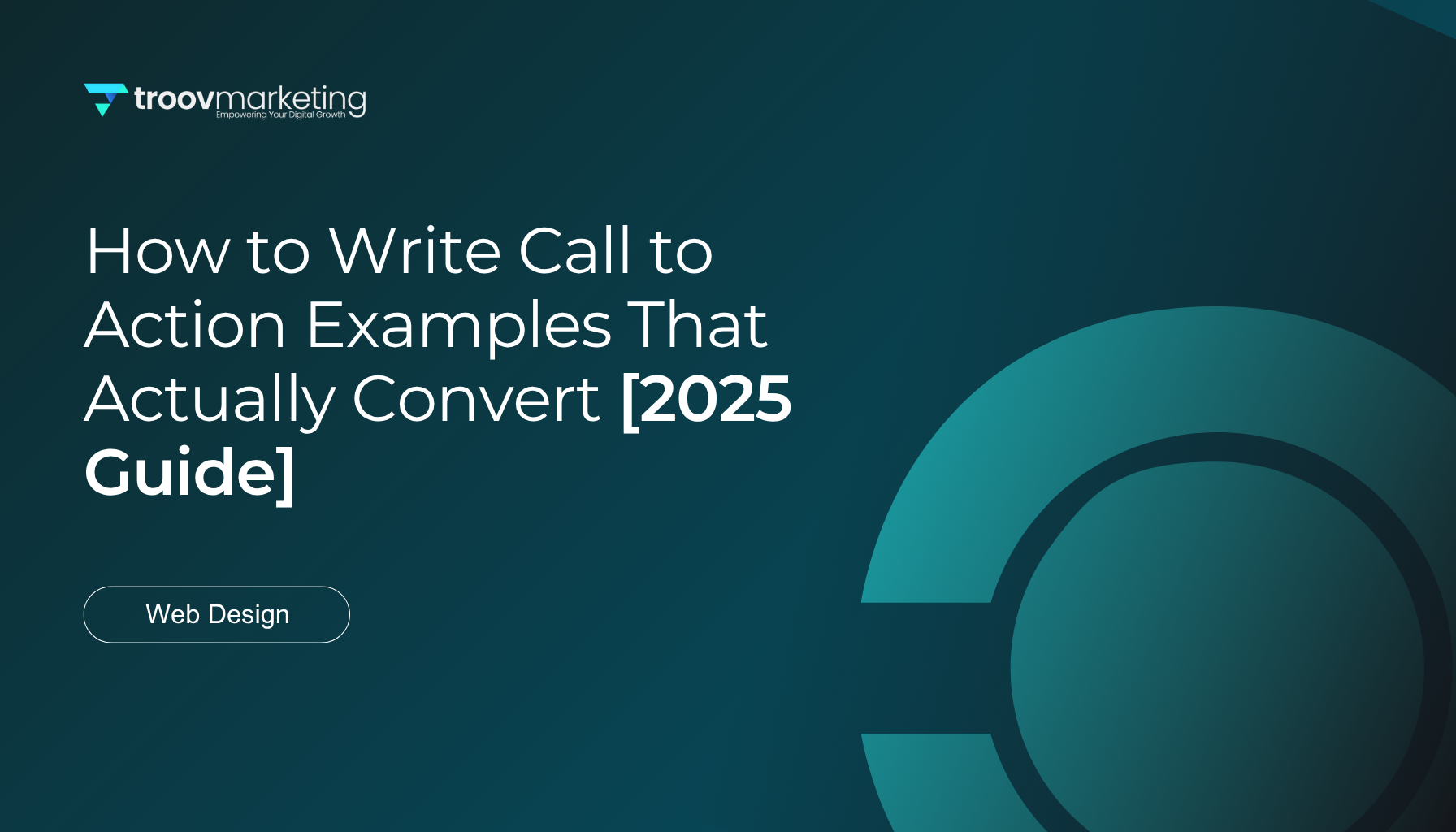Why Well-Designed Websites Actually Pay Off: Real ROI Data from Melbourne Businesses
Why Well-Designed Websites Actually Pay Off: Real ROI Data from Melbourne Businesses
Well-designed websites work as digital salespeople that deliver measurable returns around the clock. Businesses with a strong online presence can achieve up to 400% ROI. A $10,000 website investment can generate $50,000 in revenue.
Small business owners report higher sales after improving their website's design - 47% see direct results. These websites help boost conversion rates by 20% for small businesses. The improved design creates a 30% increase in customer leads that stimulates growth in today's digital world.
Many business owners find it hard to calculate these benefits. Website ROI understanding is vital today since 65% of marketers can't show their marketing activities' effects. This piece explores how Melbourne businesses measure and maximize their website investments. Ground data shows design improvements can yield most important returns within 4-6 months.
What is Website ROI and Why It Matters
ROI serves as the life-blood of smart business decisions, particularly for your digital presence. Website ROI measures the tangible benefits your business gains against the costs of creating and maintaining your online platform.
Understanding ROI in the context of websites
Website ROI extends beyond profit versus expenses measurement. Your website's contribution to business objectives like revenue generation, lead acquisition, and customer involvement needs a thorough review [1]. The simple formula reads: ROI = (Profit generated from the site – Cost of investment) / Cost of investment [2].
Melbourne businesses experience website ROI in two main forms:
- Predicted ROI - Business owners calculate this before starting a project. They use estimated costs and projected revenues to determine if a website investment makes sense [3]
- Actual ROI - The real return comes after implementation. Final costs and actual revenue figures tell the complete story [3]
Website ROI calculations stand unique because they aren't always direct. E-commerce sites track sales easily, but many businesses must measure indirect benefits like lead generation, brand awareness, and involvement rates [4]. These metrics offer valuable insights that guide your bottom line.
Most businesses see ROI from well-designed websites within four to six months after launch. This timeframe lets them collect data and gain applicable information quickly [1].
Why Melbourne businesses are focusing on ROI now
Melbourne businesses in the competitive digital world increasingly measure website ROI to make informed marketing investment decisions. A recent case study showed how a modest monthly budget of AUD 7,644.95 turned into an impressive AUD 76,449.51 return [5]. This result proves substantial returns are possible when strategies arrange with business goals.
Melbourne businesses have realized that understanding website ROI helps them:
- Justify investment decisions - Clear ROI data helps allocate resources to high-potential campaigns [6]
- Improve website performance - ROI monitoring reveals user behavior patterns that optimize content and design elements [6]
- Identify improvement areas - Regular analysis highlights underperforming sections for strategic adjustments [6]
ROI focus has grown because Melbourne businesses now see that a well-designed website isn't just a visual asset—it's a strategic investment driving real returns [7]. The average cost of a website for small businesses ranges from AUD 3,057.98 to AUD 15,289.90 [1]. This expense needs justification through measurable outcomes.
Modern consumers prefer to educate themselves through websites before they talk to sales teams [8]. A website that delivers the right information at the right time builds credibility and converts visitors into qualified leads effectively.
Melbourne businesses know their website serves as their most valuable marketing asset in today's digital-first environment. Strategic investment and continuous optimization maximize returns consistently.
How to Calculate Website ROI
Businesses need a systematic approach to calculate their website's return on investment. Melbourne business owners can measure their website's performance by following these steps.
Step 1: Identify revenue from your website
Your business model determines how you track website revenue:
For eCommerce sites: Google Analytics ecommerce tracking helps monitor revenue, transactions, and average order value [9].
For lead generation websites: The formula works like this: Number of website visitors × Site conversion rate = Number of leads [10]. A site with 30,000 monthly visitors and a 2% conversion rate gets 600 leads monthly. The same traffic with a 0.1% conversion rate yields only 30 leads [10].
Lead value calculation uses: Number of leads × Average customer value × Close ratio = Revenue [11]. Each extra second of load time reduces conversion rates by 4.42% in the first five seconds [10].
Step 2: Add up all website-related costs
Your website expenses should include:
- Original development costs (design, development, content creation)
- Ongoing expenses (hosting, domain name, maintenance)
- Marketing costs specific to the website
- Staff time dedicated to website management
Large investments like website redesigns need amortization over their expected lifespan. To cite an instance, a website costing AUD 30,579.80 with a 3-year lifespan has an annual cost of AUD 10,193.27 [12].
Step 3: Use the ROI formula
The ROI calculation becomes simple once you have revenue and cost data:
ROI = (Revenue - Investment) / Investment × 100
This gives your ROI as a percentage [12]. You can also express it as a ratio (5:1 means AUD 5 earned for every AUD 1 invested) [13].
A full picture requires excluding organic growth from marketing campaign ROI. Subtract your average monthly organic sales growth (like 4%) from total growth before calculating ROI [14].
Example calculation from a Melbourne eCommerce site
A Melbourne retailer invested AUD 9,173.94 in website improvements. They focused on navigation, information architecture, and optimized landing pages. Here are their results:
- Monthly visitors: 6,000
- Conversion rate improved from 2% to 3% [15]
- Average customer value: AUD 1,528.99
- Annual leads generated: 180 (using 3% conversion rate)
- Customer conversion rate: 20% (36 new customers annually) [16]
Their ROI calculation:
- Annual revenue: 36 customers × AUD 1,528.99 = AUD 55,043.64
- Annual website cost: AUD 9,173.94 ÷ 3 years = AUD 3,057.98
- ROI calculation: (AUD 55,043.64 - AUD 3,057.98) ÷ AUD 3,057.98 × 100 = 1,700% [16]
These results show why well-designed websites make excellent investments. The success came from clear navigation paths, optimized landing pages with strong calls-to-action, and faster load times. These elements create accessible design that serves both users and business goals.
Key Metrics That Influence ROI
Website performance measurement extends beyond simple profit calculations. Melbourne businesses track specific metrics to understand how their digital assets turn visitors into customers.
Traffic and conversion rates
Your bottom line depends on the relationship between traffic and conversions. Getting more website visitors matters, but conversion rates determine your profits. A website that attracts thousands of visitors but generates few sales might have messaging problems [17].
The core team should focus on tracking visitor-to-high-intent-lead conversion rates. These include demonstration requests and sales conversations that show serious buying intent [8]. B2B websites prove their true value by tracking how many prospects enter the sales pipeline through website conversions [8].
More improvements in conversion rates don't always mean higher costs, which creates a wider gap between expenses and revenue [18]. A one-percent increase in conversion rate could boost ROI by 200% [19].
Bounce rate and time on site
Google Analytics defines bounce rate as the percentage of single-interaction visits [20]. Content relevance issues, poor user experience, or problematic page layouts often cause high bounce rates [20].
Session duration shows how much time visitors spend with your content. Relevant content and good design naturally keep users on your site longer [21]. This metric helps you spot problems—your messaging might need work if users spend little time on important pages [4].
Meaningful engagement requires monitoring these metrics alongside user actions. Google views longer site visits positively, while brief visits might suggest low relevance to search queries [22].
Lead quality and customer lifetime value
Quality leads convert better than low-quality ones. You're working with quality leads when you turn them into paying customers at lower costs than expected [23]. Sales teams spend less time on these leads, which saves money and optimizes resources [23].
Customer Lifetime Value (CLV) shows the total revenue from a customer's relationship with your business [1]. CLV helps you target ideal customers and find cross-selling opportunities that encourage repeat purchases [1]. Comparing customer acquisition costs with lifetime value shows marketing effectiveness and justifies future website investments [1].
SEO performance and organic reach
Organic traffic makes up 53% of all trackable website traffic [22]. This metric shows how well your site grows its audience without paid advertising. Rankings, backlinks (one of Google's most important ranking factors), and organic conversions serve as key performance indicators [22].
Backlinks come from external sources that point to your site. Rankings strongly correlate with the number of referring domains [24].
User engagement and content interaction
User engagement shows how active visitors are and how well your product keeps their interest [2]. Content engagement metrics reveal how effectively your content helps users move through their buying experience [25].
B2B marketers know that almost half of the buying experience involves independent research [25]. Your website content must nurture leads effectively since in-person interactions are limited. A well-designed website with engaging content encourages users to return, which improves ROI through better conversions and customer retention.
What Makes a Well-Designed Website Profitable
A profitable website combines smart design strategy that puts user experience first while meeting business goals. Here are the essential elements that make well-designed websites valuable assets for Melbourne businesses.
Clear navigation and fast load times
Your website's success starts with accessible navigation. Visitors should quickly find what they need through well-laid-out pages and clear signage. A mall-like navigation structure helps customers enjoy their shopping experience and boosts engagement that drives conversions.
Speed plays a crucial role - each extra second of loading time cuts into conversion rates. Your pages need to load quickly by using right-sized image files and web-friendly formats. This keeps potential customers interested instead of frustrated.
Mobile responsiveness and accessibility
Mobile traffic now makes up over half of all internet traffic, so your website must work perfectly on all devices. The numbers tell the story - 53% of mobile users leave pages that take more than three seconds to load. A responsive design adjusts layouts, fonts, and images to match different screen sizes. This creates an exceptional experience whatever device people use.
Your website should serve everyone, including people with disabilities. This inclusive mindset grows your potential customer base and meets legal and ethical standards.
Strong calls-to-action and lead capture
Powerful CTAs turn visitors into leads and customers. Request your online presence audit to see how your current CTAs stack up against industry standards. The best CTAs use strong action verbs that create urgency and clearly show the next steps. Button-based CTAs have shown up to 28% increase in clicks compared to text links.
Visual hierarchy and brand consistency
Visual hierarchy puts elements in order so users notice important information first. This arrangement guides visitors through your site naturally and highlights key messages and CTAs. Size, color, contrast and whitespace work together to create a clear path for users.
Brand consistency in typography, colors, and imagery builds trust. This strengthens the connection between visitors and your brand.
Real ROI Data from Melbourne Businesses
The numbers tell the story. Let's look at real data from Melbourne businesses that shows the clear effect of website investments.
Case study: Local retail brand sees 300% ROI
A Melbourne-based law firm went through a well-planned website update focused on SEO. They saw a 300% increase in organic search traffic within six months [26]. Their success came from improvements to site architecture and content strategy. Client inquiries grew significantly. Another B2B company reported 20% more qualified leads within three months after their redesign [26]. This matches data showing well-designed websites can boost conversion rates by up to 35% when they focus on user-focused features [26].
Case study: Service business improves lead quality
MSX's Service Lead Management shows the value of well-designed digital experiences. They nearly doubled service visits in the first year, reaching 90,000 bookings with an 85% conversion-to-visit rate [27]. Their contacted customer visits grew from 13% to 23% over three years [27]. Request your online presence audit to find similar opportunities for your business. Some dealerships using this approach ended up with an amazing 12:1 return on investment [27]. This proves smart digital solutions directly affect bottom-line results.
Case study: Redesign leads to 40% drop in bounce rate
An e-commerce site with a 40% bounce rate went through a complete overhaul to fix critical problems [3]. The old site had poor mobile usability even though 52% of traffic came from mobile devices [3]. They prioritized a mobile-first approach with clean visuals and better navigation. Bounce rates fell to 27%—a 32% improvement [3]. This meant about 2,000 more engaged sessions each month [3]. Put simply, thousands more potential customers stayed on the site instead of leaving. The redesign fixed specific user complaints about reordering visibility, frequent pop-ups, and payment processing—key elements of well-designed websites.
Conclusion
Well-designed websites serve as powerful business investments beyond just digital storefronts. The evidence in this piece shows that smart website design brings substantial returns for Melbourne businesses. Design choices directly lead to financial gains, with returns showing up in four to six months after implementation.
The ROI calculation process gives you solid numbers to back your website investment decisions. Tracking metrics like conversion rates, bounce rates, and user engagement helps you learn about your site's performance. These numbers enable continuous improvement and create a cycle of growing returns.
Melbourne business case studies prove that design improvements deliver measurable results. A law firm achieved 300% ROI through SEO-focused redesign, while a service business doubled its bookings. These success stories highlight the value of smart website investments. Request your online presence audit to find similar opportunities for your business and spot areas where design improvements could boost your bottom line.
On top of that, the elements that make websites profitable work together as a system. Easy-to-use navigation, mobile responsiveness, strategic CTAs, and visual hierarchy strengthen each other. They create an experience that turns visitors into customers. A comprehensive approach to your website as a business tool changes how you handle design and measurement.
Your customers tell the true story of your website's success through their engagement, conversions, and loyalty. The metrics and formulas help calculate ROI, but user behavior matters most. Regular analysis and optimization based on this behavior will help your website deliver outstanding returns for years ahead.
FAQs
Q1. How long does it typically take to see a return on investment for a well-designed website? Most businesses can expect to see a return on their website investment within four to six months after implementation. This timeframe allows for proper data collection and provides actionable insights relatively quickly.
Q2. What are some key metrics to track when measuring website ROI? Important metrics to track include traffic and conversion rates, bounce rate and time on site, lead quality and customer lifetime value, SEO performance and organic reach, and user engagement with content. These metrics provide valuable insights into how effectively your website is contributing to business objectives.
Q3. How can I calculate the ROI of my website? To calculate website ROI, first identify revenue generated from your website, then add up all website-related costs. Use the formula: ROI = (Revenue - Investment) / Investment × 100. This will give you your ROI as a percentage. Remember to consider both direct sales and lead generation when calculating revenue.
Q4. What design elements contribute to a profitable website? Key elements of a profitable website include clear navigation, fast load times, mobile responsiveness, accessibility, strong calls-to-action, effective lead capture mechanisms, visual hierarchy, and brand consistency. These elements work together to create a user-friendly experience that encourages conversions.
Q5. Can you provide an example of a successful website redesign? One case study showed an e-commerce site that reduced its bounce rate from 40% to 27% after a redesign focused on mobile usability and addressing user complaints. This improvement resulted in approximately 2,000 additional engaged sessions monthly, demonstrating how strategic design changes can significantly impact user behavior and potential sales.
